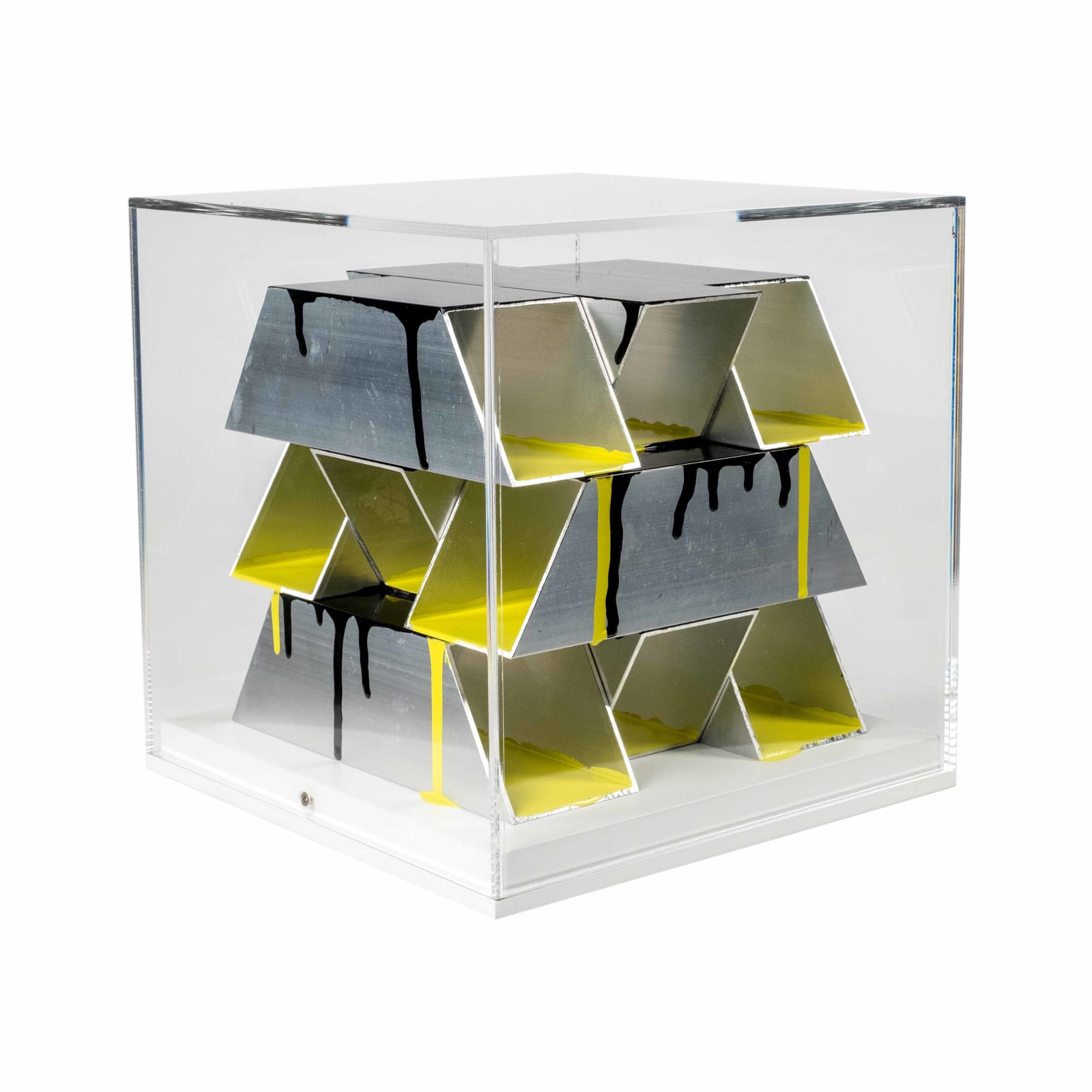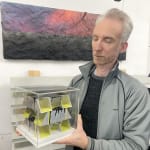Open a larger version of the following image in a popup:
 Portrait courtesy the artist
Portrait courtesy the artist
 Portrait courtesy the artist
Portrait courtesy the artist
Nathaniel Rackowe
Drift Point (small) , 2022
Perspex cube, aluminium, bitumen, paint
20x20x20cm
Copyright The Artist
Sold
Raw aluminium square tubes are cut, angled, and stacked in a complex and deliberate order that echoes architectural form. At In his commission for Cure3, Drift Point, Nathaniel Rackowe has...
Raw aluminium square tubes are cut, angled, and stacked in a complex and deliberate order that echoes architectural form. At In his commission for Cure3, Drift Point, Nathaniel Rackowe has drawn from his series of large-scale sculptures to create this smaller piece but with the addition of glossy yellow industrial paint for the first time. The title refers to the moment where function, aesthetics and meaning seem to separate and flow together in new ways. He states: “I am constantly investigating and interrogating this moment, as I move through the city. Buildings, landscape, the built and the natural; I see them layer and combine. I seek moments of transcendental beauty that belie their raw and fundamental materiality. Light becomes a driving force for this transformation, as it turns the familiar and recognisable into unexpected vistas that force a reconsideration of space, and of self. The Drift Point therefore becomes an event horizon, an irreversible moment, the pivot used to glean meaning from the spaces that shape us.”
The series uses three fundamental materials: aluminium, paint and bitumen, all materials that belong to the city.certain angles, these stacks appear solid and impenetrable, yet from others they become light and transparent, allowing sight through the hollow sections. A layer of bitumen and paint becomes the material that binds the structure together, the inky blackness and glassy yellow contrasting to the silvery reflective aluminium. Drips of bitumen and paint spill over, layering an organic softness to balance the hard edges of the aluminium geometry.
The series uses three fundamental materials: aluminium, paint and bitumen, all materials that belong to the city.certain angles, these stacks appear solid and impenetrable, yet from others they become light and transparent, allowing sight through the hollow sections. A layer of bitumen and paint becomes the material that binds the structure together, the inky blackness and glassy yellow contrasting to the silvery reflective aluminium. Drips of bitumen and paint spill over, layering an organic softness to balance the hard edges of the aluminium geometry.


